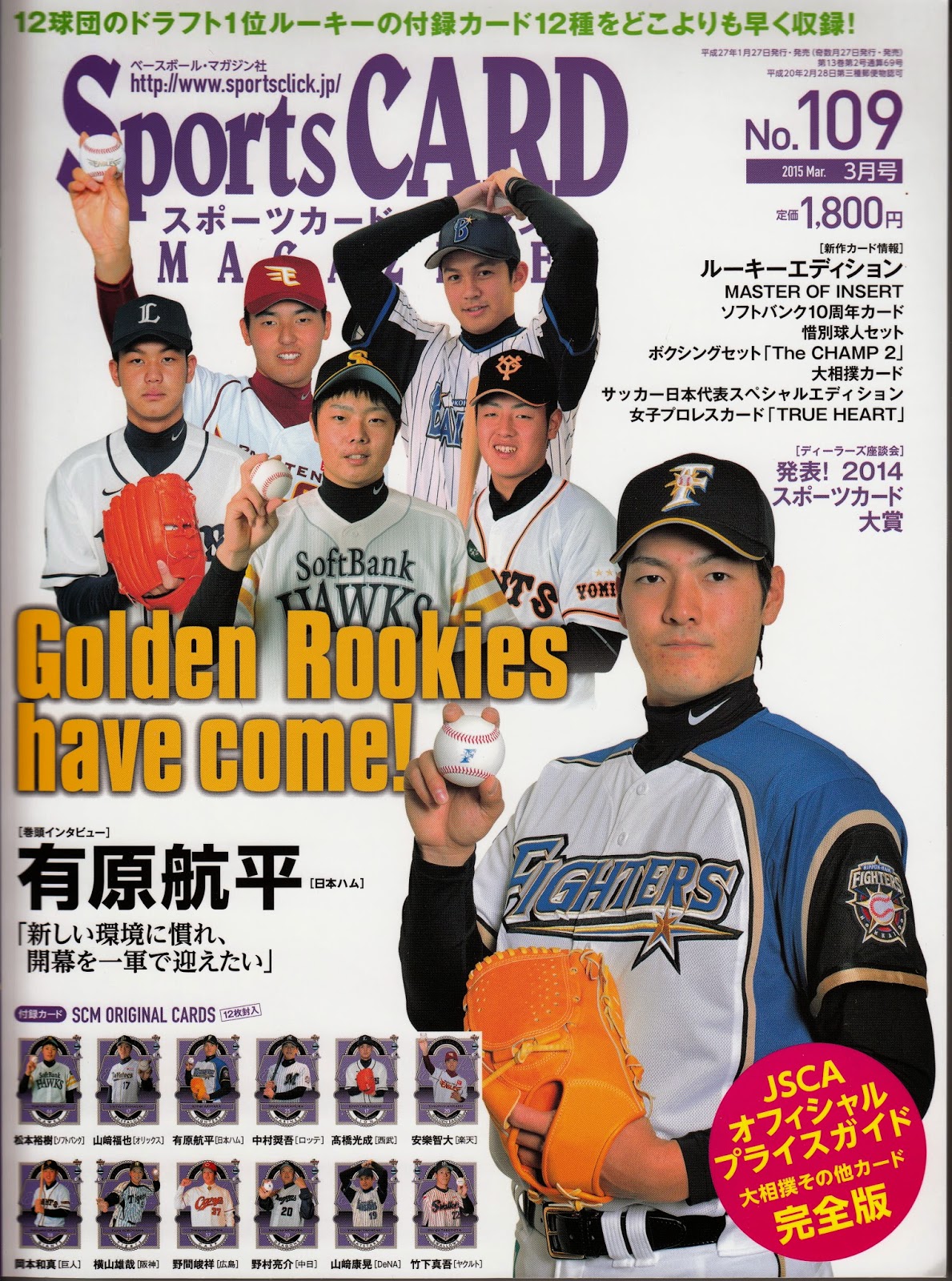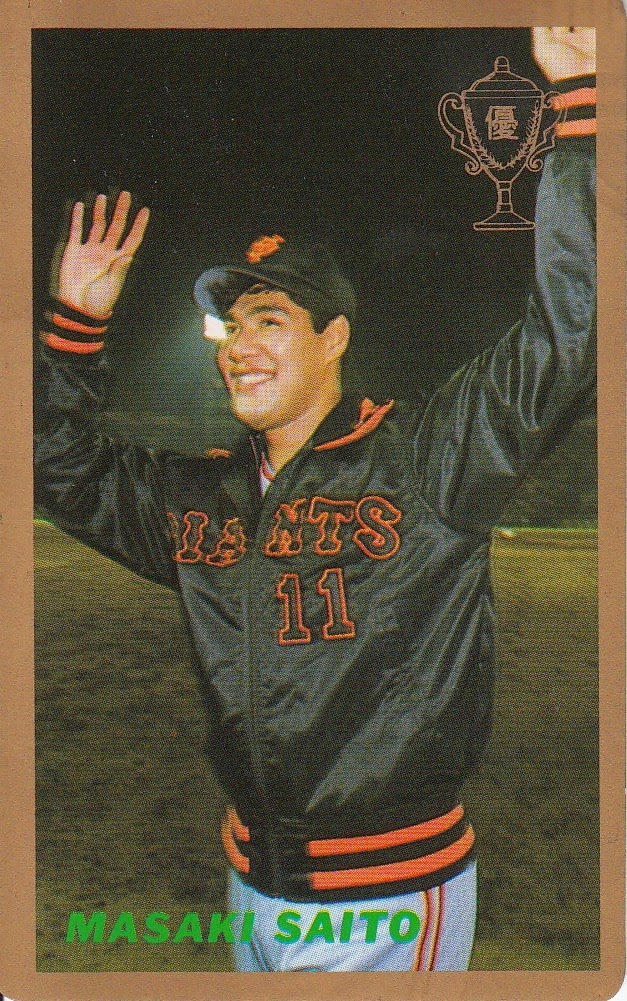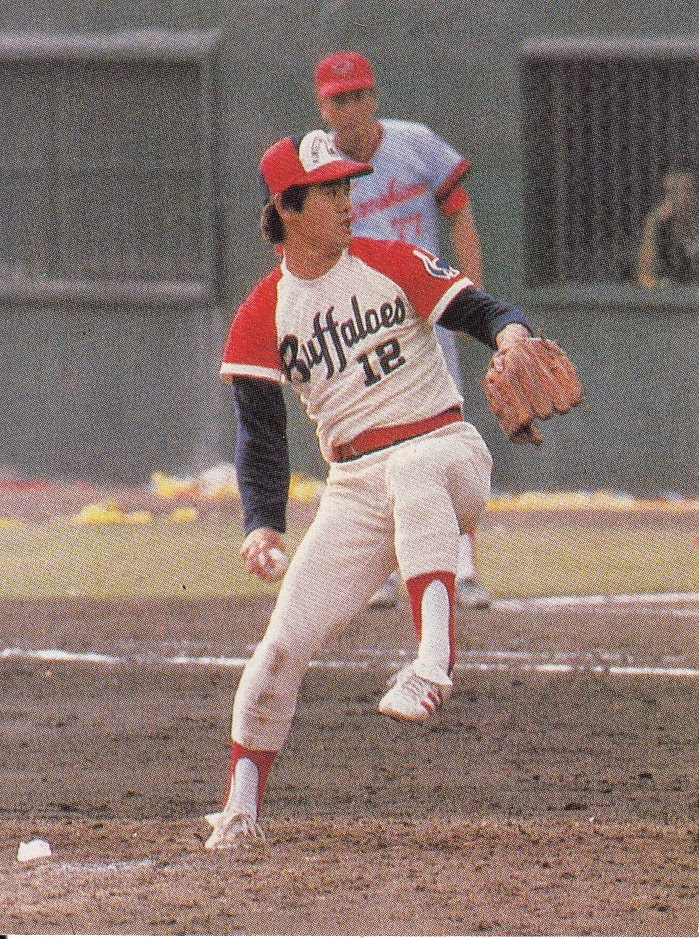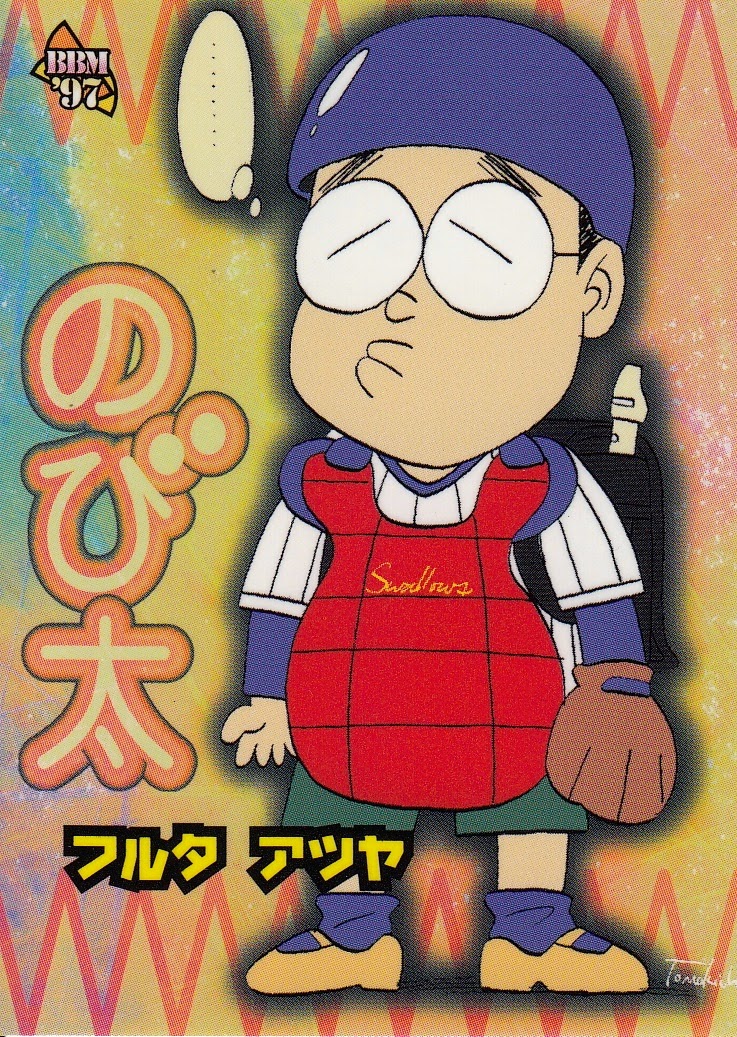The Beginning
It all started with a fax.
The fax was received in 1988 by the International Sports Management and Consulting firm (ISMAC) in Kobe. ISMAC had been founded in the early 1980's by Marty Kuehnert, who is one of the names that constantly appears when you read about Japanese baseball. Kuehnert got his start working as the business manager of the Lodi, CA team in the California League when it was owned by Nagayoshi Nakamura who stocked it with players from the Orions in 1972 and Lions in 1973 (According to Robert Obojshi’s “The Rise of Japanese Baseball Power”, Nakamura was the owner of the Lotte Orions in 1972 but he sold his “controlling interest” in the team prior to 1973 when he bought into the then-Nishitetsu Lions). He went on to be director of sales and promotions for the Lions in the mid-70’s and handled licensing for Descente (a sportswear company in Osaka) before starting ISMAC. Kuehnert would go on to be the President of the Birmingham Barons in the early 1990's and was the first GM of the Tohoku Rakuten Golden Eagles in 2005. He has also hosted a TV sports talk show, run a restaurant, wrote a couple newspaper columns for the Daily Yomiuri and the Japan Times and has published seven books in Japan. As of 2011 he was teaching classes at both Sendai and Tohoku Universities (he was also vice-president of Sendai University).
 |
| 2005 BBM Eagles Box Set #E02 |
The fax was sent by Sy Berger, president of Topps Chewing Gum in the States. Berger wanted to know about baseball card collecting in Japan. Kuehnert asked Larry Fuhrmann, one of his employees, to investigate because as Fuhrmann puts it “I collected cards as a kid growing up so I knew about collecting.”
Like many before and after him, Fuhrmann had come to Japan in the early 80's to teach English. "I moved to Japan to teach English in 1982. I met Marty Kuehnert in 1983 at the bar he owned in Kobe. I went back to San Francisco in 1986 and worked for Yamato Transport but was not satisfied with the work. I mentioned to friends in Japan that I wanted to move back there. I met Marty in [San Francisco] in March of 1988 when he was on a business trip and he told me that he was going to open the first Sports Bar and Restaurant [in Japan] in the summer/fall of that year. He asked me to be the manager and I agreed and moved back to Japan in June. Originally, The Attic Junior (his original bar was called The Attic) was going to be open for lunch and I was to work a regular 9 to 6 shift. But the lunch business didn’t work out so we quit that and I found myself working from 5 until 1 am or later. With 2 young boys (age 1 & 3) it was less than an ideal family situation (and not much sleep for me) so I asked Marty if I could work at ISMAC on a regular 9-5 shift instead and he agreed." His duties with ISMAC included office work, writing the Japanese Baseball Newsletter (sponsored by Mizuno and sent to foreign players) and doing both play-by-play and color broadcasting for English language baseball telecasts for Kansai TV.
Research
Fuhrmann had quite a daunting task. There was no organized baseball card collecting hobby in Japan in 1988. "Marty told me to find out as much as I could. I went out and bought samples of what was available which was not much, just Calbee Chips cards and Takara game cards which came in team sets. I found out that cards were not sold in packs like Topps, Donruss, Fleer and Score cards were in the States. Then I started researching the history of card collecting in Japan [and] bought all the examples of old cards I could find, including menko and bromides."
 |
| 1988 Calbee #25 (Hiromitsu Ochiai) |
 |
| 1988 Takara Tigers #44 (Randy Bass) |
Fuhrmann was able to find the current cards by going “to toy stores and local corner stores called dagashiya” but finding older cards was much more difficult. He related some of the obstacles in a 1990 interview with Rich Marazzi in Sports Collectors Digest: "The first 15-20 people I asked, they didn't understand the concept of a baseball card. The older people know about Menko and Menko is now among some people a collectors item...There's nothing written about Japanese baseball cards, certainly nothing that I know in English. When I began my research I found one article in a 1982 issue of a magazine called Number. The article was about Kobai Caramels. All the information I've gotten is from talking with people...Another problem is that Japan is a small and crowded country. In the cities the living quarters are very small and there are no basements or attics where people would store their collections and rediscover them in 10-15 years."
With (obviously) no card shops, he hunted the older cards wherever he could: "I frequent flea markets, old bookstores and antique shops" he related in a second interview with Marazzi in 1991. Along the way he developed a network of other collectors, both in Japan and the US.
“We contacted the Baseball Hall Of Fame (at Korakuen) in Tokyo, but they couldn’t tell us anything about baseball cards in Japan.” Fuhrmann told the Kyodo News Service in 1989. In fact, I’ve heard that they’re directing requests for information about Japanese baseball cards to us”.
After a short time, it was no longer just a job for Fuhrmann. “I was hooked and started collecting Japanese cards and memorabilia in my free time.”
Calbee
One of the most fascinating aspects of Fuhrmann's research was his relationship with Calbee, which started in early 1989. "I contacted Calbee to inquire about their card history, to see if they had a master checklist (they did not) and asked if they had leftover stock of old cards (they said they didn’t)." He made a visit to Calbee's Tokyo office and met with the employee in charge of their baseball cards. "He didn’t have a clue about cards or collecting. He was probably around 25 or so. There was no consistency to Calbee baseball cards because a new guy took over the job every other year or two. I tried to impress upon him/them how big the hobby was in the U.S. So finally I suggested that we go to the States and I would show them around so they could see with their own eyes. I was going back to [Connecticut] (I was born and raised in Danbury, CT) on vacation to visit my parents so I suggested they come at that time. So 2 guys from Calbee came to meet me...and I took them to a card show, card shops and down to the Score company which was located in [Connecticut]."
After that, Fuhrmann began a consulting relationship with Calbee, making occasional suggestions to them. "Through my urging in 1989 Calbee began printing the name of the Japanese player in Roman letters on the card, so Americans could at least read the name" he told Marazzi in 1990.
 |
| Backs of 1989 Series One and Series Two Calbee cards of Kimiyasu Kudoh. Note the addition of the Roman letters on the Series Two card |
Calbee did not follow all of his suggestions however: "The biggest thing I tried to get them to do was have rookie cards of highly touted players just out of high school, college or the corporate leagues. One specific guy was Hideo Nomo. His first year was 1990 but Calbee didn’t make a card of him that year. They told me that the Kintetsu Buffaloes (and pro teams in general) wouldn’t allow them to. The mentality at the time was that rookies had to earn their stripes. Veterans who had paid their dues deserved it more."
The First Card Show
By mid 1989, Fuhrmann and ISMAC had gathered quite a collection of Japanese baseball cards. “[Marty] and I decided that since we had gone out and collected as many old Japanese cards as we could, we decided to see if we could sell any” he told Marazzi in 1990. They decided to organize a card show, the first ever in Japan.
The show was held on September 3, 1989, at Kuehnert’s Attic Junior restaurant in Kobe. It featured both American and Japanese baseball memorabilia for sale. Guests included Daryl Spencer, who had played seven seasons with the Hankyu Braves in the late 1960’s-early 1970’s and Boomer Wells, who was at that time a star for the now-Orix Braves. Somewhere between 100 and 200 people attended, traveling from as far away as Kyushu and Tokyo (and reportedly at least one collector from Southern California). Fuhrmann was quoted in a 1990 Baseball Card News article on the show as saying that the crowd was estimated to be 15% Americans who accounted for 35% of the sales. The American collectors were reportedly most interested in Japanese items while Japanese collectors were more interested in American items.
 |
| 1990 Calbee #98 |
 |
| 2013 BBM Legendary Foreigner #04 |
By all accounts, the card show was a rousing success. ISMAC followed up with a second show in Kobe in 1990 and a show in Tokyo in 1991. By that time, however, ISMAC had moved into a whole new arena.
BBM
As early as 1989, Kuehnert had plans to publish baseball cards. “Marty Kuehnert has always been an aggressive businessman and he knew that the way to make real money was produce cards and grow the market. He was friends with Ikuo “Ike” Ikeda, the head of Baseball Magazine SHA. So Marty convinced Ike and his company to make baseball cards.”
 |
| From left to right - Fuhrman, Orel Hershiser, Kuehnert and Ikeda during the 1988 MLB Tour of Japan (photo courtesy of Larry Fuhrman) |
Fuhrmann would be instrumental with the new line of cards. “When [Baseball Magazine SHA] finally decided to go ahead with the project, I moved up to Tokyo in 1991 to supervise everything. No one [there] had a clue about card collecting. They were book and magazine publishers. So just about everything [they] did with their cards was at my instruction. I am the person who came up with the name BBM, decided what would be put on the backs of the cards, was adamant that rookies be included [and] pushed for Oh, Nagashima and other greats from the past be included [in the “Nostalgic Stars” subset]”. It was also Fuhrmann’s idea to include a subset featuring the statistical leaders and award winners from the previous season.
Previous card sets in Japan had only featured the most popular players on a team, not the “benchwarmers”. (The one exception to this were the Takara game sets. They were sold by team set and each team set included 30 different players from the team.) Even Calbee’s huge 1000+ card sets of the mid 1970’s contained only the biggest star players (on multiple cards). BBM’s inaugural set would include 29 players for each of the 12 teams plus the manager. “We chose the players who we felt were most likely to see the most playing time in the coming season, but sometimes I lobbied to include a player for popularity reasons.”
 |
| 1991 BBM foil pack |
The inaugural 1991 BBM set would include many other features that were common to American baseball card sets but were unheard of in Japan at the time. Cards were issued in 10 card foil packs with no food product - most other card sets had been issued with only one to three cards in a pack and almost always associated with a food product (Calbee with potato chips, Lotte with gum, etc). The back of BBM’s player cards featured vital statistics for the players (birthdate, height, weight) as well as the player’s complete career statistics. Other than the language, the backs could have been from a Topps set. No other Japanese card set (with the exception of the 1967 Kabaya-Leaf set) had ever had backs like that. BBM also sold factory sets, another first for Japan.
 |
| Fuhrmann with Hideo Nomo at Kobe Green Stadium in 1991 (Photo courtesy of Larry Fuhrmann) |
One casualty of the new card set was Fuhrmann and ISMAC’s relationship with Calbee. “When Calbee found out about that they were not pleased...I tried to tell them that having new card producers would HELP them, not hurt them as it would grow the market.”
Fuhrmann continued to work for BBM after the first set was released. “After the inaugural set was finished and went on sale, I moved back to Kobe...ISMAC was moving to Tokyo and I didn’t want to go to Tokyo, so I asked Ike Ikeda if I could work for BBM, in the Osaka office. He said yes. But there was nothing for me to do in the Osaka office. They never gave me anything to do. I was getting a paycheck but not working for it so I quit after one year.”
Fuhrmann embarked a new career when he left BBM, but he continued to consult with them for a couple more years. One thing he was involved with was signing the foreign OB players for the “Nostalgic Stars” subset in the 1994 set. “I was authorized by BBM to offer the former players only 30,000 yen and 300 cards as compensation.” There was one player that BBM had targeted who refused. “I guess [he] thought he was worth more than that.” He also started writing articles for a publication that Baseball Magazine SHA had started up in 1993 called Sports Card Magazine. This was a predecessor to the current newsstand magazine. “The first 14 or so issues were more like pamphlets which we handed out for free at card shows.”
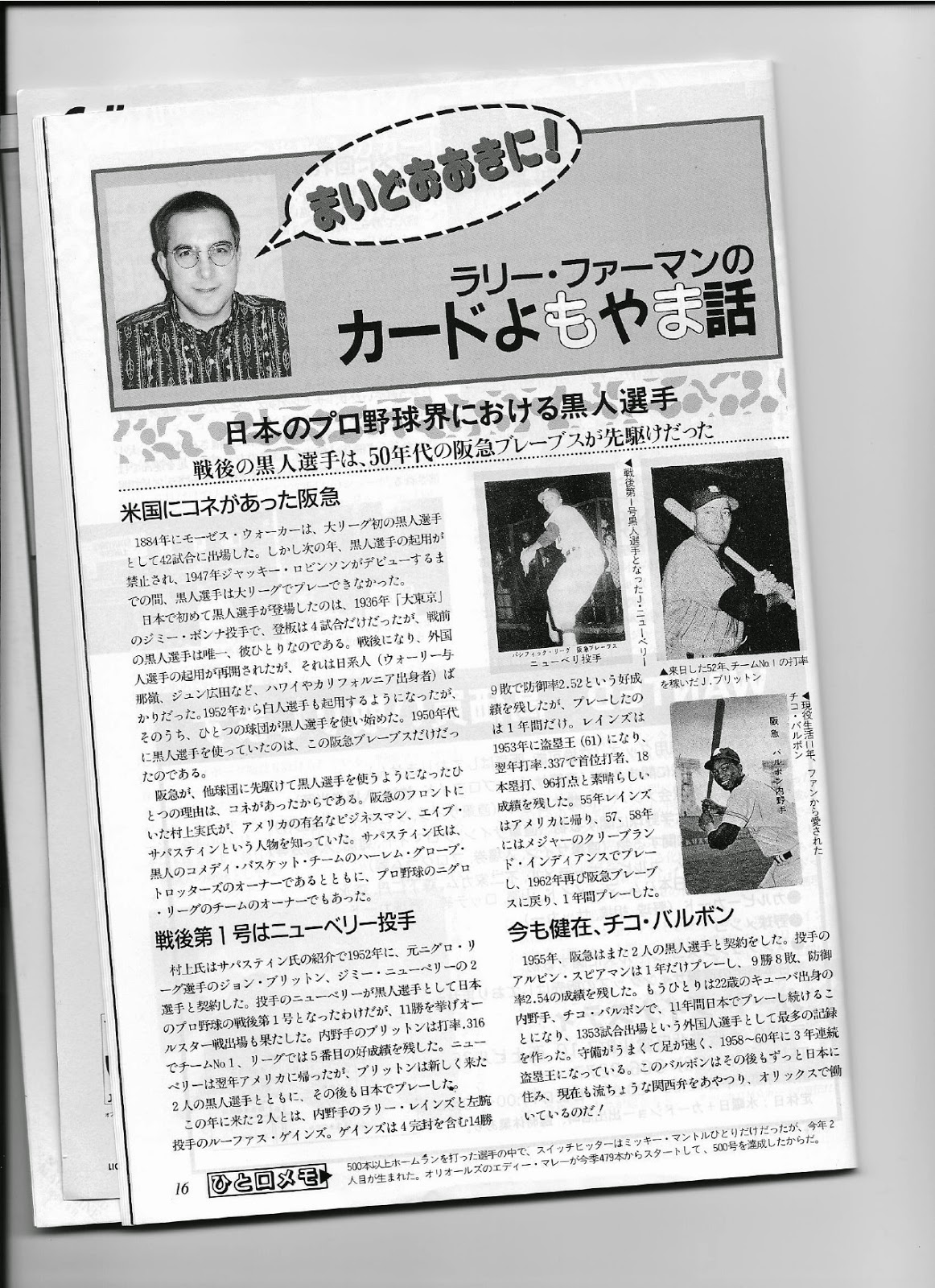 |
| Fuhrman article from Sports Card Magazine #13, Autumn 1996 (courtesy of Paul Margiott) |
But the main focus for Fuhrmann after he left BBM was starting his own business. “In 1994 I started selling cards and memorabilia full-time.” Fuhrmann was one of the first vintage card dealers in Japan and continues buying and selling memorabilia to this day. “I used to set up a booth at card shows and advertise in Sports Card Magazine and did a lot of mail order. Now I only sell on the Yahoo! Japan Auctions [as "dealer_larry"] and Ebay [as "larryinkobe"].”
REFERENCES
Hamaker, Susan
“Marty Kuehnert: A Lifetime In Japanese Baseball”, January 21, 2011
Kaye, Alan “Collecting News”, Baseball Card News, January 19, 1990
Kuehnert, Marty "
Marty's Ballpark"
Marazzi, Rich “Batting The Breeze” column, Sports Collector’s Digest, July 13, 1990
Marazzi, Rich “Batting The Breeze” column, Sports Collector’s Digest, February 1, 1991
May, William H, “Will Baseball Card Collecting Boom Hit Japan?” Mainichi Daily News, June 30, 1989
Mizuno Japanese Baseball Newsletter, August 24, 1989
Mizuno Japanese Baseball Newsletter, June 22, 1990
Mizuno Japanese Baseball Newsletter, August 27, 1991
Obojski, Robert,
“The Rise of Japanese Baseball Power”, (1975)
ACKNOWLEDGEMENTS
I want to thank Larry Fuhrmann for graciously allowing me to interview him over email and being patient while I s-l-o-w-l-y put all this together (I've been working on this for the better part of a year). And I need to thank him for the photos he sent as I was finally preparing this to be posted. I also want to thank Paul Margiott for providing me with the scan of Larry's SCM article as well as selling me a whole bunch of 20+ year old clippings, Ralph Pearce for suggesting that I contact Larry because he had an interesting story to tell and my wife for her help in editing this post.

















